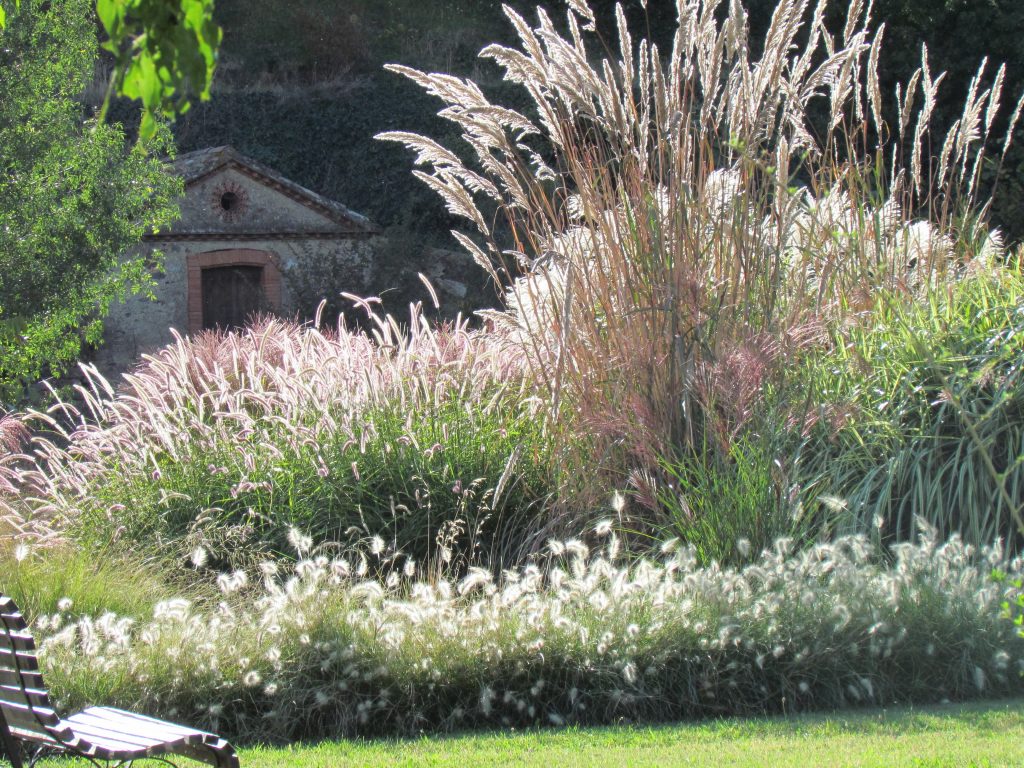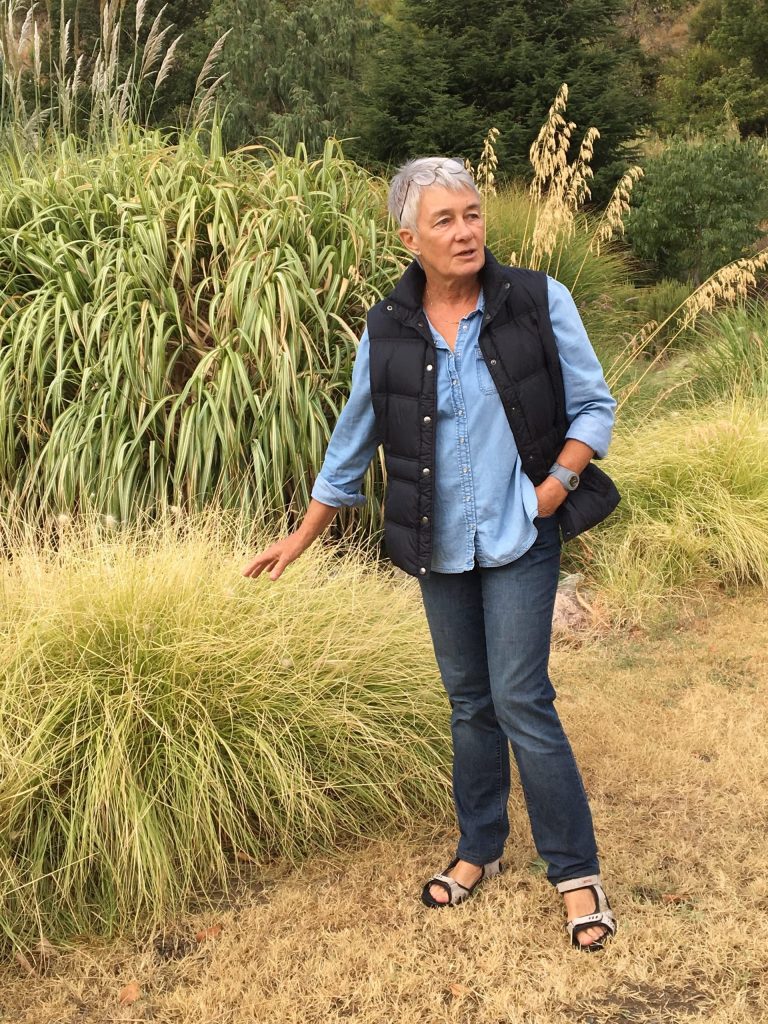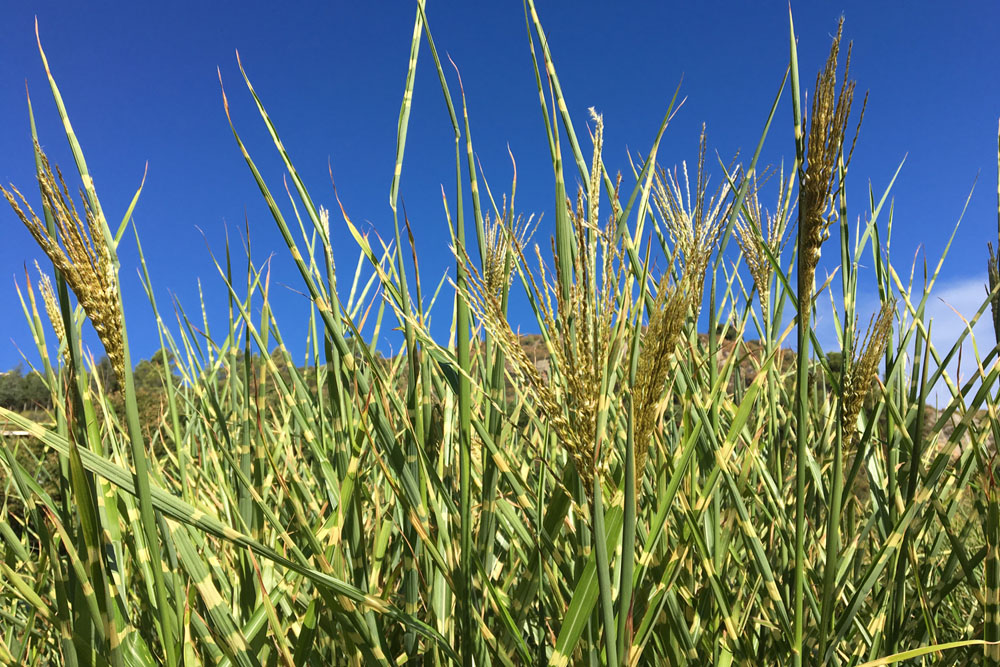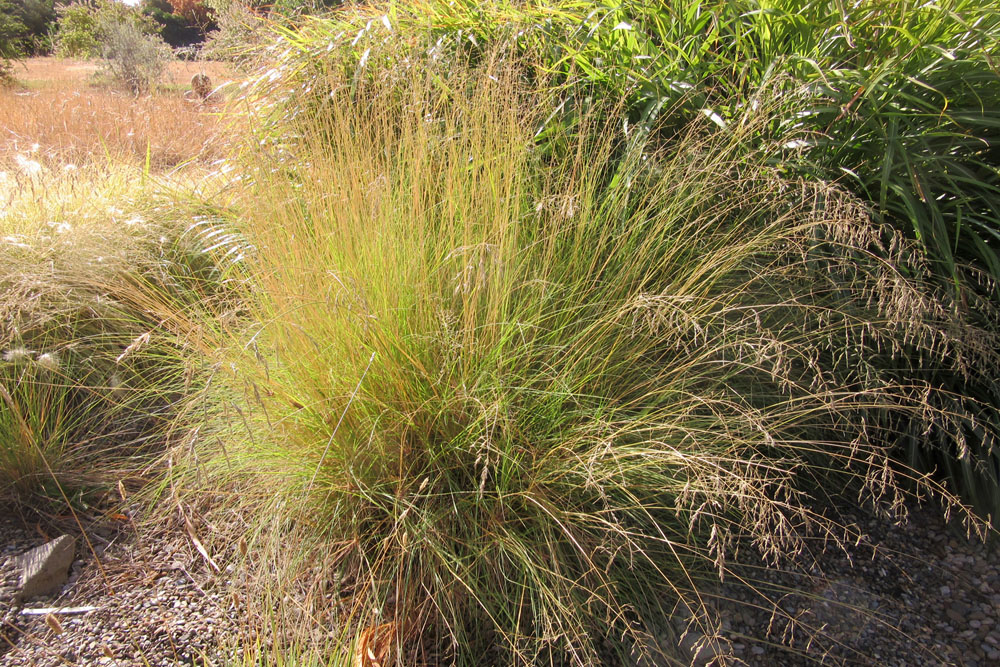Plants / Plantes
Ornamental Grasses for Gardens in Mediterranean France – Part 2
Click on an image to enlarge it / Cliquez sur une image pour l’agrandir
In September 2016 we visited Gill Pound’s garden where she gave us a talk on the selection, cultivation and propagation of grasses.
Gill has for many years been interested in growing grasses and seven years ago she decided to dedicate a space in her garden in Caunes-Minervois to experiment with different families of grasses, in order to assess their tolerance to the local Mediterranean climate. The garden has alluvial, reasonably rich, free draining, river soil and plants have to cope with hot dry summers and some quite cold periods in winter.
Gill explained that grasses fall into two main groups: ‘cool season’ grasses that tend to be evergreen and flower in spring and early summer and ‘warm season’ grasses that flower from late summer into autumn. The latter need summer temperatures from 22°C – 28°C to do well.
She said that grasses are generally low maintenance, though most need a heavy cut back in early spring. There is a large choice of different species which can create interest throughout the year, and in particular they provide foliage and textural interest in autumn and winter.
Grasses can look particularly striking in the early morning and evening as low sunshine highlights their colours and textures, their tall stems sway in the wind and morning frosts can give a sculptural appeal.
To create a grass garden from scratch, Gill suggests one should:
- Clear and dig over the selected area then cover ground with Geotex, or similar barrier fabric to prevent weeds from re-appearing.
- Plant three of each variety to create a good impact, cutting away the Geotex to make the planting holes. Arrange the grasses with consideration for their eventual height and width.
- After planting, cover the area with a mulch of gravel, shingle or slates. These inorganic mulches will help keep in moisture during the summer months.
- Water the grasses at least twice in the hot summer months, giving them a good soak with a hose during the evening. This should be sufficient to maintain the grasses in good health.
Some of the most successful grasses in Gill’s garden are:
Pennisetum
Pennisetum villosum, P. orientale ‘Karley Rose’, P. orientale ‘Tall Tails’ and P. alopecuroides
Pennisetum villosum has been used for bordering the grass bed as it creates a dense barrier and helps stop couch grass from creeping into the bed.
Miscanthus
This family of ‘warm season’ grasses needs water to flower well in late summer and early autumn. They form large, tall clumps and need space to look their best. Gill has planted Miscanthus sinensis var. condensatus ‘Cabaret’, M. sinensis var. condensatus ‘Cosmopolitan’, M. sinensis ‘Morning Light’, M. sinensis ‘Gracillimus’, M. sinensis ‘Yaku Jima’, M. sinensis ‘Zebrinus’, M. sinensis ‘Silberfeder’, M. sinensis ‘Dronning Ingrid’, M. sinensis ‘Saturnia’, M. sinensis ’Adagio’, M. sinensis ‘Ferne Osten’ and M. sinensis ‘Kleine Fontäne’. Gill recommended Miscanthus sinensis ‘Yaku Jima’ as very tough and drought tolerant, a real ‘good-doer’ and said that several of the miscanthus family will self-seed well.
Calamagrostis
Calamagrostis x acutiflora ‘Karl Foerster’, C. brachytricha
Eragrostis
Eragrostis spectabilis, E. elliottii and E. curvula
Stipa
All stipas are very drought tolerant. Stipa gigantea is useful for height and its graceful summer and autumn stems. Stipa tenuifolia (syn. S. tenuissima) self-seeds and can be a thug but if you have space it’s a welcome grass to allow to ‘wander at will’.
Ampelodesmos
For height and drama, the most spectacular grass has been Ampelodesmos mauritanicus, a large evergreen clump forming grass with beautiful wands of flowers which need space to be appreciated. It is drought tolerant and grows well in poor soil.
Maintenance and care of a grass collection.
Gill advises that most grasses need some care and maintenance to thrive. The less drought tolerant grasses will need an occasional soak in the summer months. All grasses benefit from a spring tidy- up, either by raking through the low growing evergreen grasses to remove dead growth, or, for the large clump forming grasses such as miscanthus, cutting right back to within a few centimetres of the ground with a hedge cutter or good shears before the new seasons’ growth starts. If grasses such as Pennisetum villosum become a nuisance with their creeping habit, you can simply dig around the edges to reduce the size of the clump and use the excess as new plants for elsewhere.
Good books for further information on grasses:
Designing with Grasses by Neil Lucas (of Knoll Gardens in the UK)
The Color Encyclopedia of Ornamental Grasses by Rick Darke
Text: Catriona McLean
Photos: Christine Daniels
![]()












